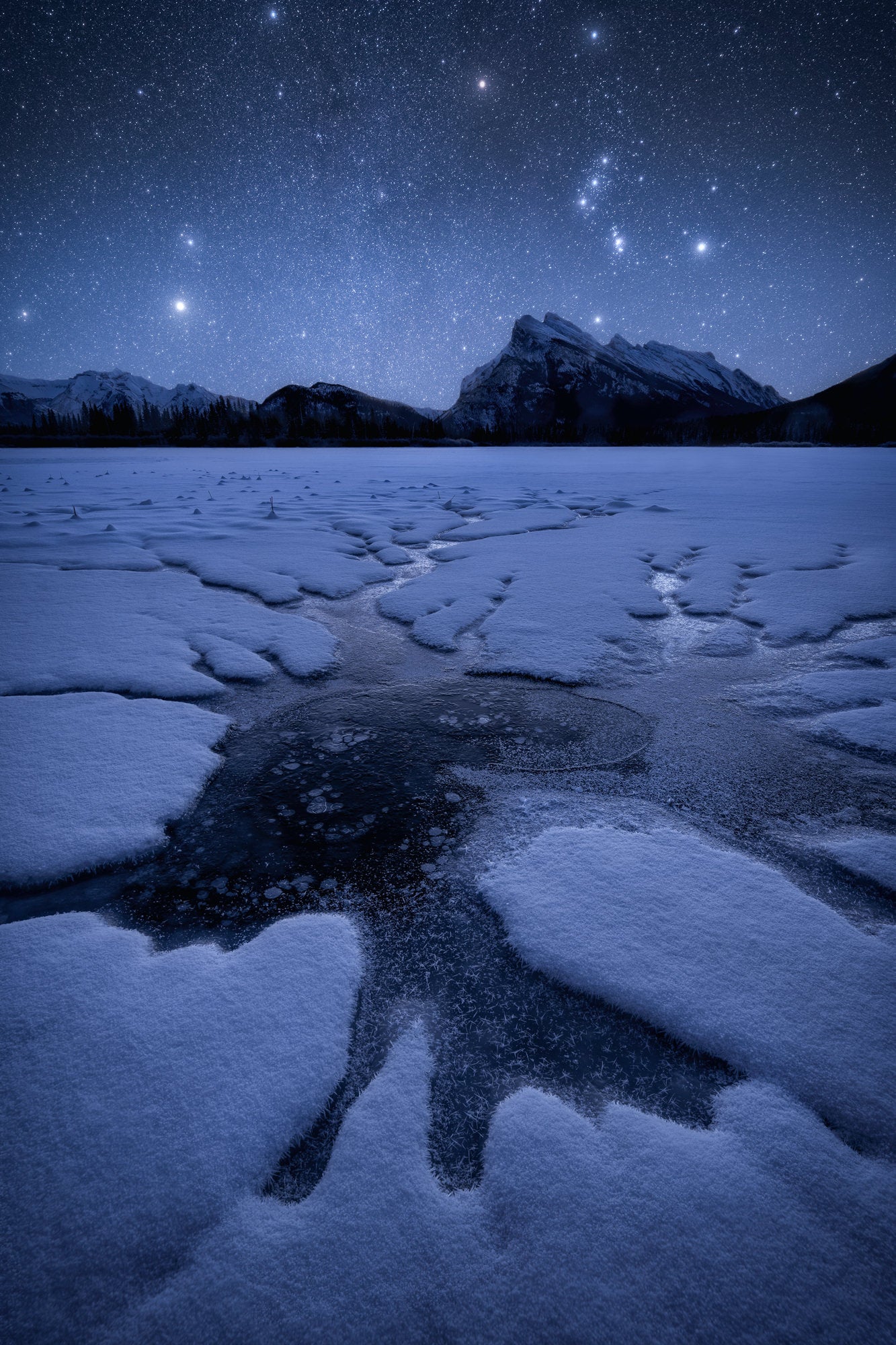Last October I ordered the Sony Alpha 7 III. Six days later, Sony announced the Alpha 7 IV. Needless to say, I had an acute attack of Gear Acquisition Syndrome and arranged to test the Sony Alpha 7 IV as soon as humanly possible
As a member of the Sony Alpha Imaging Collective, I am fortunate to have shot with every camera in the Sony Alpha line-up. I currently use the Sony Alpha 1, and the Sony Alpha 7S III. I added the Sony Alpha 7 III to my bag, and had it modified for astrophotography. (To learn more about modifying cameras for astrophotography visit Spencer’s Camera here.)

Photo by Rachel Jones Ross. Sony Alpha 7 IV.
See why Rachel Jones Ross of the Alpha Collective is calling the Sony Alpha 7 IV her most recommended camera for night and astro-landscape photographers.
The Alpha 7 IV arrived at my home in the Canadian Rockies for testing during snowmageddon, shortly before Christmas. The wintry weather did not afford many shooting opportunities, but I did manage to find clear skies for two night shoots.
The Alpha 7 IV has many of the features and functions that I know and love, including the same menu system as the Alpha 1, and the Alpha 7S III, the same long-lasting Z battery, as well as a fully articulating screen.
For the night photographer, the Alpha 7 IV (like most other Sony alpha cameras) has a feature called bright monitoring, which is unique to Sony. It boosts the internal gain, allowing your camera to display your composition, including the alignment of the Milky Way with your foreground, in the dark of night, without the need for taking tedious, time-consuming test shots.
Another feature of the Alpha 7 IV for night photography and timelapse is the built-in intervalometer. Without the need for a remote, you can program the intervalometer to timelapse, take a series of consecutive images to stack for noise reduction, or shoot self-portraits. This is my favorite feature on cold nights because I can leave my camera shooting the stars while I stay warm in my car.
What really caught my attention, however, was how clean the high-ISO night photos were, given the 33-megapixel sensor. When choosing a camera for night photography, there is naturally a tradeoff between resolution and light sensitivity. The Alpha 1 and the Alpha 7S III have the same full frame sensor. However, the Alpha 1 has 50 megapixels on that sensor, whereas the Alpha 7S III has only 12 megapixels. When there is a higher number of pixels on the same size sensor, each pixel is smaller and therefore gathers less light. In contrast, with fewer pixels, each pixel is larger and can gather more light.
What does that mean for the Alpha 7 IV, with its 33-megapixel sensor? I expected that it would perform well at night compared to other manufacturers’ cameras, as the entire Sony Alpha line-up is known for amazing low light performance. What I found was that the Alpha 7 IV is comparable to the Alpha 7S III, even with the additional 20 megapixels of resolution. I was in complete disbelief when I looked at the raw files and how little noise there was in a 12800 ISO image.
The Alpha 7 IV has the same sensor as the Alpha 7S III, and the same processor as the Alpha 1. That combination is a match made in night photography heaven! The low light performance of the Alpha 7 IV means you get cleaner, single-exposure images and timelapses.
Timelapsing was effortless in one of my first attempts with the Alpha 7 IV. I found my composition, focused on the stars, and determined that a good exposure was f/2.8, 5 seconds, and 3200 ISO. I then set the interval function to shoot 450 images, with a one-second delay between shots. The resulting timelapse was incredibly crisp, clean and smooth.
The Alpha 7 IV is marketed as an introductory camera to full frame shooting. If you are an avid night photographer, this camera is so much more than just that. It shoots low light comparably to the 12-megapixel Alpha 7S III, but with nearly three times the resolution. Combine that with bright monitoring, and built-in interval shooting, this new addition to the Sony Alpha family is the perfect merge between the Alpha 7S III and the Alpha 1, and my most recommended camera for night and astro-landscape photographers.
See more of Rachel Jones Ross’ work on her Alpha Universe Profile, Instagram @rachel_jones_ross and at astralisphotography.com.



